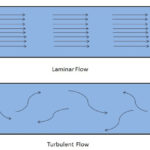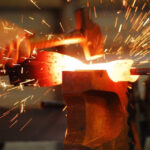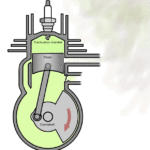In this article, we will go to learn about the difference between metals and nonmetals. There are so many metals and non-metals present in our environment. And these have a wide variety of applications. They are used in various industries throughout the world. The knowledge of these metals and non-metals is very crucial to everyone. Here I am going to discuss the difference between them. I hope that you will like it.
What are Metals
The elements that have a tendency to lose their valence electrons and form positive ions are called metals. They are solid at room temperature except for Mercury that exists in a liquid phase at room temperature. For Examples: Aluminium, iron, copper, gold, silver, platinum, lead, zinc, titanium, etc.
Properties
- Good conductors of heat and electricity.
- They are lustrous i.e have a shinning appearance
- They are ductile in nature. Ductile means that they can be drawn into thin wires.
- They are Malleable in Nature, it means that they can be hammered into thin sheets.
- They are sonorous in nature. Sonorous means, it produces sound when bitten with an object.
- They form basic oxides.
What are Non Metals
The elements that have a tendency to accepts electrons and form negative ions are called non-metals. They may be solid, liquid and gaseous at room temperature. For Example Carbon, nitrogen, oxygen, helium, hydrogen, sodium, etc.
Properties
- Poor conductors of heat and electricity except for graphite.
- They are non-lustrous in nature i.e. have a dull appearance.
- They are non-ductile in nature, which means that they can not be drawn into thin wires.
- They are not malleable in nature.
- They form negative ions by accepting electrons.
- They are non-sonorous in nature.
- They form acidic oxides.
Also Read:
- What is Cast Iron? Complete Explanation
- Types of Patterns in Casting Process
- What are the Melting Points of Metals?
Difference Between Metals and Non-metals in Tabular Form
| S.no | Metals | Non-metals |
| 1 | They are solid at room temperature except for mercury which is liquid at room temperature. | They may be solid, liquid, and gaseous at room temperature. |
| 2 | Good conductors of heat and electricity. | Poor conductors of heat and electricity. |
| 3. | They have shining appearance i.e. lustrous | They are non-lustrous i.e. having dull appearance. |
| 4. | They have ductility i.e. they can be drawn into thin wires. | They are non-ductile. |
| 5 | Metals are malleable. It means that it can be hammered into thin sheets. | Non-metals not malleable. |
| 6. | They are the elements whose atoms possess 1-3 electrons in their outermost shell (valence shell). | They are the elements whose atoms possess 4-8 electrons in their outermost shell. |
| 7 | They have the tendency to lose electrons from their valence shell | They have the tendency to gain electrons in their outermost shell |
| 8 | Metals are sonorous i.e. produces sound when bitten. | They are non-sonorous in nature. |
| 9 | They form basic oxides. | They form oxides which are acidic in nature. |
| 10 | They are having low electronegativity. | They have high electronegativity. |
| 11 | They are good reducing agent. | They are good oxidizing agent. |








